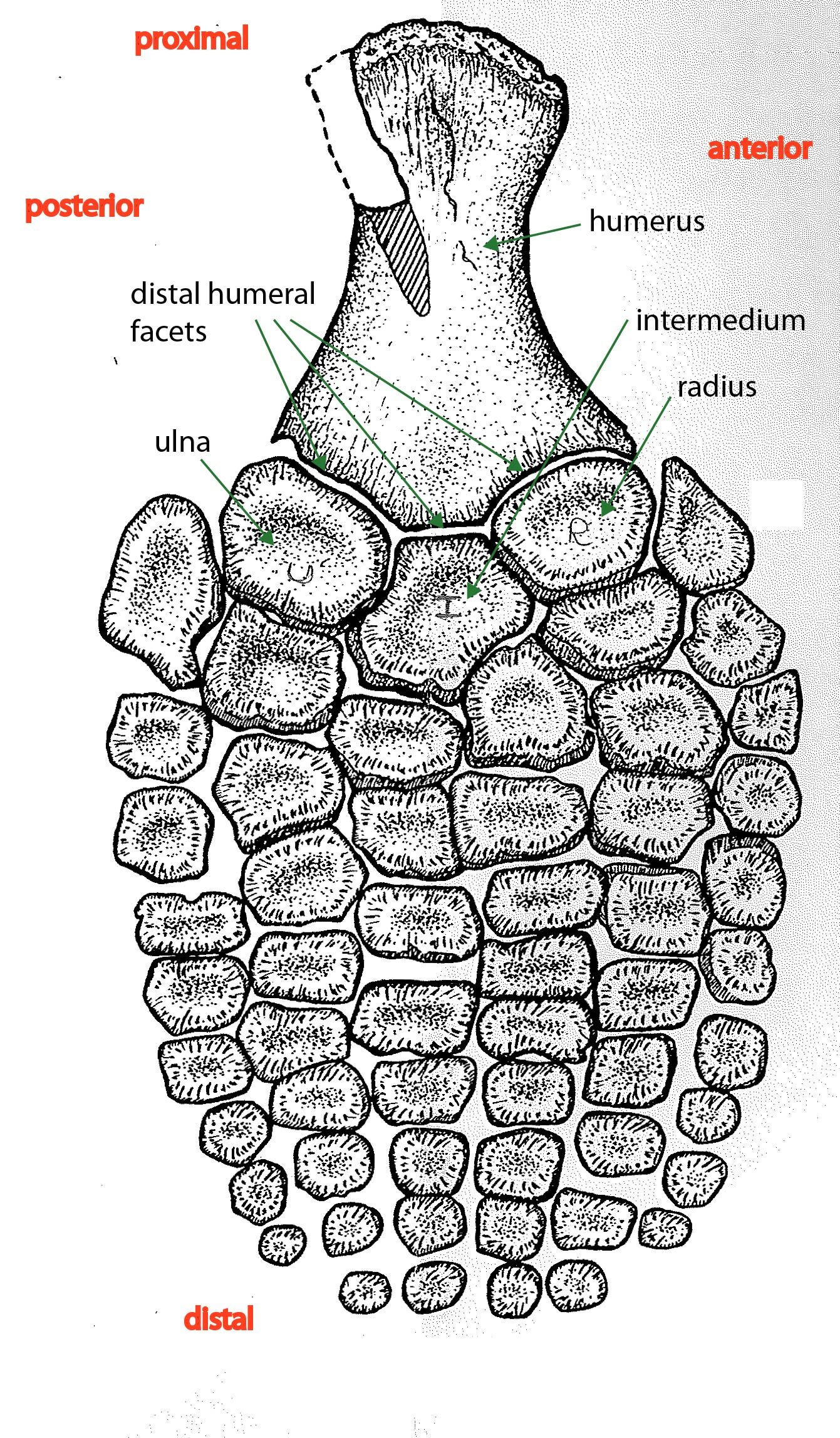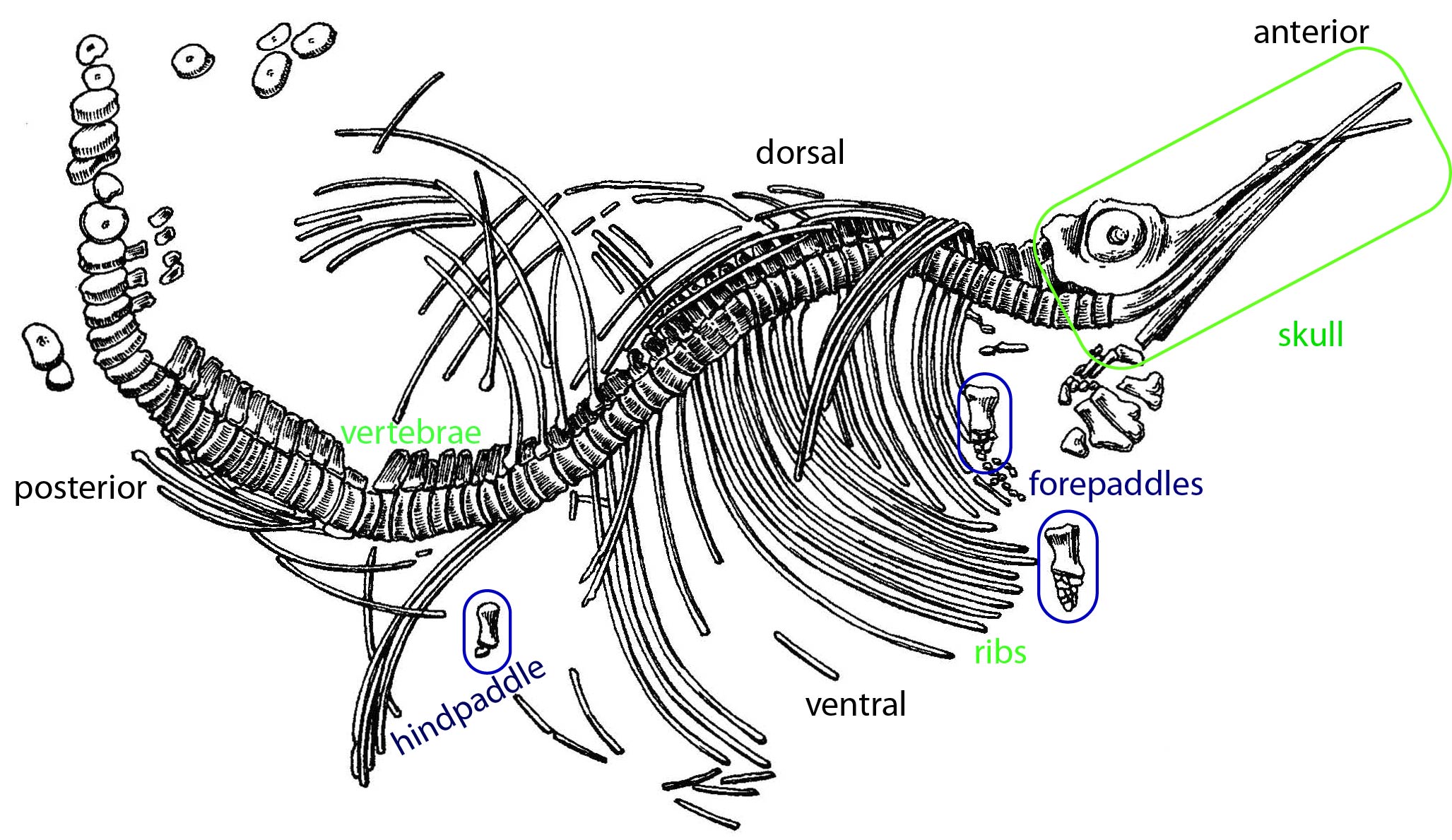My PhD plans: Part 1: a new ichthyosaur
Well, having given a presentation on the plans for my PhD, I feel as though I can now share it with the world. That and I’ve had agreement on what I plan to do and how I plan to do. Thus, here is an edited pseudo-transcript (mostly made up) on my PhD plans for the next year or so. This will be in the form of three posts:
- Part 1: a new ichthyosaur
- Part 2: the ichthyosaurs strike back
- Part 3: the return of the ichthyosaurs
My thesis is based upon an unpublished thesis of Angela Kirton (1983). As it stands, it is currently divided into two main projects. These will certainly lead on to several further projects. The initial part is to redescribe the three genera (group of species) of Late Jurassic ichthyosaurs from Great Britain. Concurrent with this, I will be comparing the three main phylogenetic analyses from 1999a (Motani) and 2000 (Maisch and Matzke; Sander).
Summary
As these posts will be quite long, I will put a small summary at the beginning of each. This way you can get the gist and come back to the details later.
The first part of my PhD will be to describe the three genera of Late Jurassic ichthyosaurs from Britain:
- Ophthalmosaurus
- Brachypterygius
- Nannopterygius
These can be identified based upon features of the skull and forelimb:
- Ophthalmosaurus has a very large eye
- Brachypterygius has three equal-sized facets on the humerus
- Nannopterygius has very tiny paddles
Ichthyosaur basics
[Specimen abbreviations: BMNH—Natural History Museum, London (originally British Museum (Natural History))]
There are a few small things that I must clear up and add from my ‘Introduction to ichthyosaurs’ blog. Firstly, how we describe different parts of vertebrates, and where the features of interest are (fig. 1).
The front of the animal (where the head is) is called anterior. The rear, or tail end, is posterior: your hands are anterior to your legs. The belly-side is ventral whereas the back is dorsal: your spine is dorsal to your belly button. Each side is called the right or left lateral side: your right hand is on the right lateral side. Closer to the body is proximal whereas distal is farther: your hand is distal to your elbow.

The ichthyosaurs that I am looking at show different features of the skull and paddle. In the skull, the size of the eye is the most obvious difference. The forepaddle (arm) varies in relative size, as do the number and size of the distal facets (concave faces) on the humerus (fig. 2).

Ichthyosaurs can have many digits (fingers) and phalanges (finger bones). Humans have five digits on each hand, each with three phalanges (the thumb has two). Some ichthyosaurs could have eight digits, each with over 20 phalanges. Oddly enough, these are not all the same as our five fingers. Ophthalmosaurus (fig. 2) has six digits and up to nine phalanges on each. The middle four digits (fig. 2, numbered) are analogous to ours. However, the other two are ‘accessory digits’ from different origins. These definitions will be important in describing the ichthyosaurs below.
British Upper Jurassic ichthyosaurs
The three ichthyosaur genera from the British Late Jurassic are: Ophthalmosaurus, Brachypterygius and Nannopterygius. I will give the most visible differences of these.
Ophthalmosaurus (oph-THAL-mo-SORE-us) is found in the Oxford Clay of the Callovian and Oxfordian stages (~162–~155 Ma). Some possible remains are from the Kimmeridgian Stage (~155.6–150.8 Ma). As the name suggests, this ichthyosaur is famous for having a large eye (‘ophthalmo-’ is from the Latin for eye; fig. 3). It is the largest eye compared to body size known (Motani 1999b)! The humerus has three distal facets. These articulate with the pre-axial accessory digit, the radius and the ulna (Seeley 1874; Kirton 1983; McGowan and Motani 2003). The anterior facet is the smallest. The posteriormost is oblique to the other two.

Ophthalmosaurus icenicus, the single British species, is the most common Late Jurassic ichthyosaur. Many specimens have been found near Peterborough, collected by the Leeds brothers in the last half of the 19^th^ Century. The Leeds’ Collection was largely donated to the Natural History Museum in London, but parts went to museums around the UK.
Brachyterygius (BRACK-ip-ter-I-gi-us) is known from the Kimmeridgian (~155.6–150.8 Ma) of Dorset but there are also some possible finds from the Purbeck Beds (Lower Cretaceous, ~143 Ma) (Ensom et al. 2009) and even later (Lydekker 1888; McGowan and Motani 2003). This genus was originally described from a forepaddle (fig. 4). Brachypterygius’s paddle also has three distal facets on the humerus, each is subequally sized and oblique to each other (McGowan 1997). These facets articulate (anterior to posterior) with the radius, (unusually) intermedium and ulna. As with Ophthalmosaurus there are four digits with one pre- and one post-axial accessory digit.

A skull in the Sedgwick Museum, Cambridge, described as Grendelius, was suggested to be Brachypterygius. This was confirmed by a specimen in Bristol Museum. This whole body specimen posses the skull of Grendelius with the forepaddle of Brachypterygius (McGowan 1997). Because of this, Grendelius was renamed Brachypterygius (the earlier name gets precedence). There are two species of Brachypterygius from the British Late Jurassic: B. extremus (the original) and B. mordax (originally Grendelius; McGowan 1997).
Nannopterygius (NAN-op-ter-I-gi-us) is the most uncommon, and unusual, of British Late Jurassic ichthyosaurs. Only one whole body specimen, and one forepaddle, is known. As the ‘nanno-’ in the name suggests, there is something small on this ichthyosaur: the paddles (see fig. 5; Hulke 1871). Nannopterygius has significantly reduced fore- and hindpaddles (McGowan and Motani 2003). These contain less than half the number of bones of other ichthyosaurs. The humerus of Nannopterygius is also different from Ophthalmosaurus and Brachypterygius: it has only two distal facets. These articulate with the radius and ulna (McGowan and Motani 2003). The single British species, Nannopterygius enthekiodon, is from the Kimmeridgian of Kimmeridge Bay, Dorset (Hulke 1871).

Rationale
Whereas Ophthalmosaurus has a lot of material available, Brachypterygius and Nannopterygius are known from only a few good specimens each. These were described when first found, in the late 19^th^ and early 20^th^ centuries, but briefly, and have escaped extended descriptions since. The largest recent work was done by Angela Kirton (1983) in her PhD thesis but is unpublished. The recent surge in ichthyosaur interest, particularly in this millennium, has meant that the need for definite and accurate descriptions has increased. This is especially important for conducting phylogenetic analyses, which is what I will talk about in my next post.
References
ENSOM, P. C., CLEMENTS, R. G., FEIST-BURKHARDT, S., MILNER, A. R., CHITOLIE, J., JEFFERY, P. A. and JONES, C. 2009. The age and identity of an ichthyosaur reputedly from the Purbeck Limestone Group, Lower Cretaceous, Dorset, southern England. Cretaceous Research, 30, 699–709.
HULKE, J. W. 1871. Note on an Ichthyosaurus (I. enthekiodon) from Kimmeridge Bay, Dorset. Quarterly Journal of the Geological Society, 27, 440–441.
KIRTON, A. M. 1983. A review of British Upper Jurassic ichthyosaurs. Unpublished PhD Thesis, University of Newcastle-upon-Tyne, 239 pp.
LYDEKKER, R. 1888. Note on the classification of the Ichthyopterygia (with a notice of two new species). Geological Magazine, 5, 309–313.
MAISCH, M. W. and MATZKE, A. T. 2000. The Ichthyosauria. Stuttgarter Beiträge zur Naturkunde, Serie B (Geologie und Paläontologie), 298, 1–160.
MCGOWAN, C. 1997. The taxonomic status of Grendelius mordax: a preliminary report. Journal of Vertebrate Paleontology, 17, 428–430.
MCGOWAN, C. and MOTANI, R. 2003. Ichthyopterygia. In SUES, H.-D. (ed.) Handbook of Paleoherpetology, Vol. 8. Verlag Dr. Friedrich Pfeil, Munich, 175 pp.
MOTANI, R. 1999a. Phylogeny of the Ichthyopterygia. Journal of Vertebrate Paleontology, 19, 473–496.
MOTANI, R. 1999b. Large eyeballs in diving ichthyosaurs. Nature, 402, 747.
SANDER, P. M. 2000. Ichthyosauria: their diversity, distribution, and phylogeny. Paläontologische Zeitschrift, 74, 1–35.
SEELEY, H. G. 1874. On the pectoral arch and fore limb of Ophthalmosaurus, a new ichthyosaurian genus from the Oxford Clay. Quarterly Journal of the Geological Society, 30, 696–707.

Leave a comment